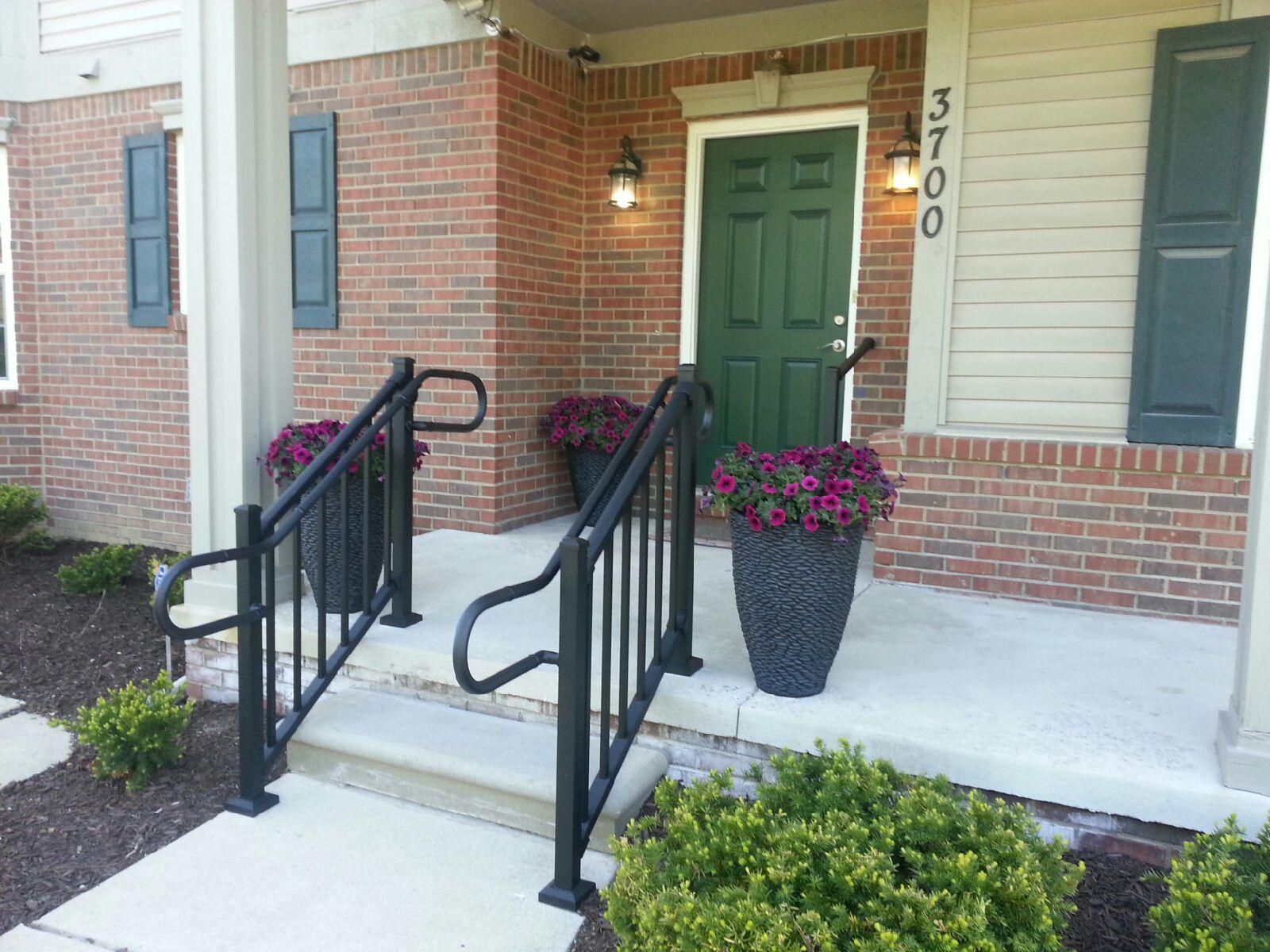AHD Blog
The Proper Handrail Height
From young children to fully grown adults, handrails assist people of all heights and abilities. You might have memories of reaching up high to grasp a handrail as a child, or maybe even attempting to slide down one when your parents weren’t around. Now, years later, as an adult, you might find your hand has been conditioned to automatically reach for a certain spot to find the handrail as you ascend stairs or a ramp. You can thank the International Code Council (ICC) and the Americans with Disabilities Act (ADA) for this, as they set guidelines for the proper handrail height for residential and commercial buildings.
The Proper Handrail Height
ICC Handrail Codes
The ICC reevaluates and updates codes on a regular basis. Currently, the ICC recommends the following:
- Handrails on stairways, ramps, stepped aisles, and ramped aisles need to be measured above the stair tread surface or finish surface of the ramp slope.
- The handrail height must be uniform (the same height) above each stair tread and surface of the ramp. So the handrail should incline at the same rate as the stairs or ramp.
- Handrails should be no less than 34 inches above the stair or ramp and no more than 38 inches above.
- If you are working with alternating tread devices or ship ladders, you should measure above the tread nosings. The handrail should be between 30-34 inches above.
The ICC does provide exceptions to this code, however. For example, if you use handrail fittings or bendings that provide transitions between flights of stairs, the fittings/bendings can exceed the maximum height.
ADA-Compliant Handrail Height
Passed by Congress in 1990, the ADA protects the rights of Americans with disabilities. When it comes to handrails in commercial buildings, always work with an ADA-compliant handrail company, and make sure to install the set according to ADA height codes. Luckily, the ADA agrees with the ICC when it comes to handrail height, so you don’t have to worry about one code conflicting with the other.
Handrail Heights for Children
While you must install a set of handrails that meets ICC and ADA adult height requirements, you can install an extra set to make it easy for kids to reach. This is an especially good idea in places like preschools, play gyms, and other places kids frequent. In fact, when children are the primary occupants of a space, the ADA requires the installation of an adult handrail and child handrail. The act sets these requirements:
- The heights of handrails on ramps, stairs, and walkways should be measured at a 90-degree angle directly above the stair tread or walking surface.
- Handrail height shouldn’t exceed 28 inches.
- The set of child handrails and adult handrails should be spaced at least 9 inches apart, so children don’t run the risk of trapping their hands between the sets.
- You must install a set of handrails on both sides of the stairway, ramp, or walkway.
_____
Handrails keep millions of people safe every second of the day. We are lucky to live in a world with organizations like the ICC and acts like the ADA, because they help set safety standards.
Do you still have questions about the proper handrail height? Don’t worry. Your contractor will ensure you stay up to code. However, the ADA has other requirements to take into consideration, so you should also work with a handrail supplier who stays on top of the latest rules. Aluminum Handrail Direct offers ADA-approved, high-quality, and maintenance-free aluminum handrails and accessories. With more than 15 years of experience in the industry, we can help you choose the right railings for your application. We’ll even ship your handrails directly to you to make your building process as easy as possible. For more information, give us a call at 417-409-3179.


